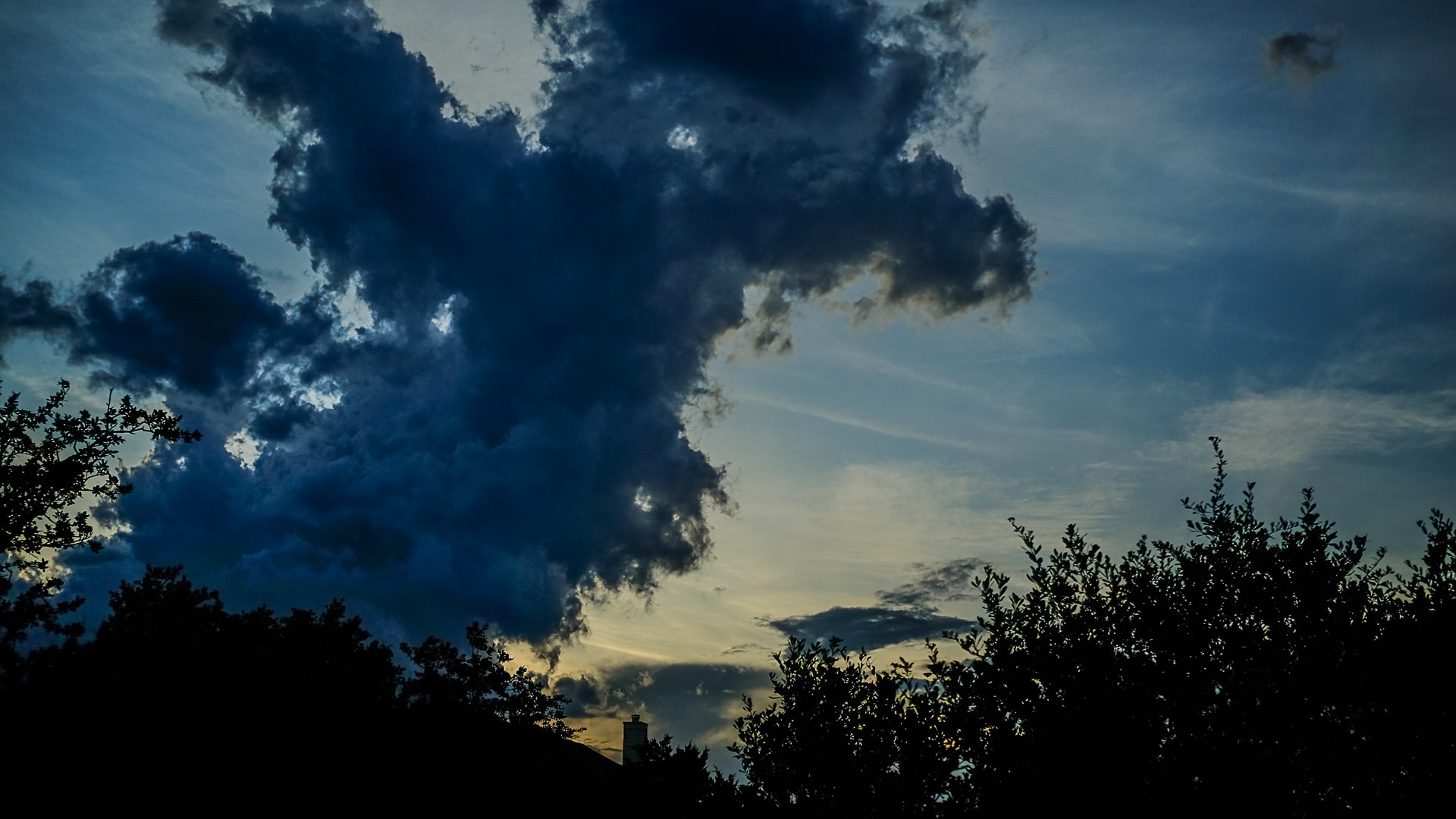
“Flying West” Cedar Park, 2020
I just love creating these time-lapse sequences. Fun to watch, at least for me. Please enjoy!
daily slice-of-life photo blog of a Gen-X dad

こんばんは。How’s it going?
There’s a big storm to the south of us in Houston, but we’re starting to feel the effects up here in Austin. Rain’s in the forecast! I’m thinking of Bay, though, since he’s at school in Houston. He said classes might be cancelled tomorrow if the rain is to heavy. I hope it doesn’t flood down there!
Anyways, we had a beautiful sunset tonight and I set up my little time-lapse rig to capture it. I left the camera in aperture priority for this video, shot at f/8 and let the camera choose the shutter speed to adjust to the dimming sky. I think it did a pretty good job, with just a little bit of flicker. It’s fascinating to me to see how the clouds change color both gradually, and in sudden bursts of color. Time-lapse is like a glimpse into another world that is beyond our perception normally. Isn’t it incredible? I think so!
Fujifilm X100T Time-lapse – September 17, 2019 – Sunset from Barron Fujimoto on Vimeo.
I hope you had a nice day!
またね~

Today I spent a bit of time refining the time-lapse process on the Fujifilm X100T. With each one I create, I notice some tweaks that would make it better. I think I’m close to finalizing on my settings! 😊
For this video, I noticed there is a lot of flickering which I’ve determined is caused by the X100T’s built-in ND filter. It’s similar to the flickering that is caused by the variance in exposure when the aperture rings step down. In that case, even though the aperture might be set to the same f/5.6 for all the photos, the blades will not go to the exact same position each exposure. This causes the flickering in the final video. The solution to this on the X100T is to shoot wide open at f/2, so that the aperture blades don’t move. If you have a camera where you can force the blades to not move for each exposure, that is perfect! Or perhaps switch to a manual-lens with an aperture ring.
Anyways, the X100T’s ND filter will move into place for every exposure, so there is a slight variance in the amount of light that it blocks, and that causes the flickering effect. If you do need to reduce the amount of light hitting the sensor, I’d use a regular old ND filter screwed onto the lens, or take advantage of the extreme high shutter-speeds that the electronic shutter enables.
Speaking of the electronic shutter I suggest making sure you are using it for another reason: eliminating any moving parts during the image sequence capture. This means less wear and tear on the camera. Even at f/2, the X100T will activate the aperture blades. 🤷♂️
So, if you hear any noise whatsoever (assuming you have camera beeps turned off), then check your aperture, focus-type, ND filter, and shutter-type. It should be dead silent!
There’s is a lot to remember when making these time-lapse sequences, so I made a checklist of settings. These are specific for shooting JPG on the Fujifilm X100T, but might be helpful for other cameras as well:
That’s it!
The Fujifilm X100T is a nice little camera to create the time-lapse sequences. The only things that would make it better would be the ability to manually stop down the lens, and to remove the 999 exposure limit on interval shooting.
I hope you had a nice day.
またね~